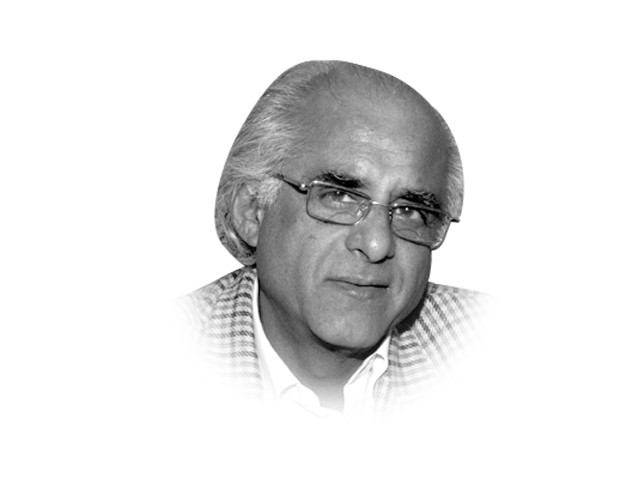How a saint is born
Tell the truth and watch it rejected; whisper some inane notion to the winds and it becomes gospel.

In November 1991, when I was working on my book on Gujranwala, I thought I had discovered a monument that had escaped the official eye. But my mentor Dr Saifur Rahman Dar told me that this building was mid-17th century and housed the mortal remains of Divan Abdul Nabi Khan, the governor of Wazirabad, successively under Shah Jehan and Aurangzeb.
On my first visit, I was told that the building was raised by jinns and was locally known as Deo Minara — Minaret of the Jinn. No one knew who was interred within and the usual refrain was, ‘It’s been there since the time of our grandfathers and nobody knows anything about it.’ In Punjabi plain-speak, this means it could either be millions of years old or one hundred.
There was one interesting story in November 1991: a woman had, of late, started to visit the mausoleum. She dismounted from her escort’s motorcycle some ways away and came dancing to the tomb where she did all sorts of genuflexions at the subterranean graves. She told the people that a vision in her dream had informed her that these three were great heroes of Islam, who had come from Arabia and whose exertions had done much for religion in the heathen land of India. My investigations revealed that this seer of visions was a superannuated dancing woman and prostitute from Chhicherwali, a village outside Gujranwala.
Exactly a year later, November 1992, I took a bunch of college students from Lahore to Kotli Maqbara. Some local hangers-on warned me this being the hallowed burial of a great man of God, we could not go in with our shoes on. We went in nevertheless.
Done with our excursion, our bunch was at the nearby hand pump where we were joined by a group of young men from the village. I was telling the kids about Abdul Nabi Khan when one of the locals interrupted me. What on earth was I babbling on about, he demanded to know. Everyone knew that the tomb housed three saints. The man also said I could believe what I wanted, but everyone knew how supplication at the tomb was answered quickly.
Since when, I asked. And the answer: “This has always happened since the time of our grandfathers. Everyone knows of it.” However, none of the locals could give us the saints’ names.
Nine years later, in early 2001, I returned to Kotli Maqbara. The entrance to the underground burial chamber was now draped with the signature green satin of holy Islamic burials. The new steel signboard had names: Hazrat Pir Makki Shah and Hazrat Pir Atray Shah. The first one was understandable: you want to create a saint, just name him Makki Shah — from Mecca — and you get a ready-made saint. The second name was inexplicable and the third was evidently under consideration.
I went into the village and asked around. Of course, the names had been known since the time of the grandfathers. If no one remembered what the past was like only a year after it had been reinvented, it was foolish to imagine they would now want to recall the time before 1991, 10 years later.
There were stories about how supplicants’ wishes simply came true as soon as they put their foreheads to the ground in front of the graves. Now people took off their shoes about a hundred metres from the plinth of the building. There was a weekly Thursday festival and an annual urs to celebrate the death of Makki Shah. No prizes for guessing who took the pickings from the business: none but the woman from Chhicherwali, who had retired from selling her virtue — though, if she had any is questionable.
Strange place, Pakistan. Tell the truth and watch it rejected; whisper some inane notion to the winds and it becomes gospel.
Published in The Express Tribune, August 11th, 2012.













COMMENTS
Comments are moderated and generally will be posted if they are on-topic and not abusive.
For more information, please see our Comments FAQ